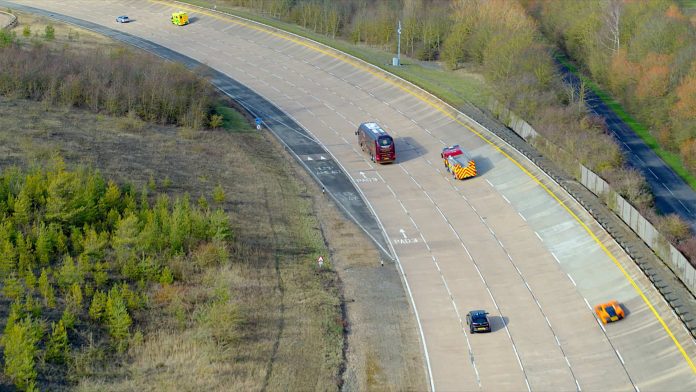The UK divisions of US networking giant Cisco and Spanish telecoms group Telefónica have contributed to a new “cybersecurity blueprint” to protect the UK from cyber-attacks on connected and autonomous vehicles and transport systems.
The pair joined with the Warwick Manufacturing Group at the University of Warwick and Millbrook Proving Ground during the 12-week-long Baselining, Automation and Response for CAV Testbed (BeARCAT) project, funded by Innovate UK and the Centre for Connected and Autonomous Vehicles (CCAV).
Cisco led the project at the Millbrook Proving Ground, a vehicle testing facility in Bedford. Telefónica’s UK-based carrier business, O2, provided access to technical subject matter experts during the trial, which ran to the end of March.
O2’s investigation focused on developing models to classify, manage, and mitigate cybersecurity risks for intelligent transport systems, it said. Its work involved examining cyberthreats posed to cellular vehicle-to-everything (C-V2X) networks and intelligent transport systems using 5GHz (ITS-G5) network technology.
The consortium’s recommendations have been presented to Innovate UK to form the basis of a future cybersecurity CAV test facility.
Joel Obstfeld, engineer in Cisco’s emerging technology team, said: “From the operational expertise of O2’s cybersecurity experts, Millbrook’s experience in the testing environment, the academic research capabilities of the Warwick Manufacturing Group, to Cisco’s expertise in networks and security services, BeARCAT offers a great example of the cross-disciplinary thinking required to create a viable testing framework to address cybersecurity challenges for CAVs.”
Brendan O’Reilly, chief technology officer at O2, said: “If connected and autonomous vehicles are going to become a permanent fixture in our day-to-day lives, it will be critical that governments and the public feel reassured that this technology is secure from cyber-attacks. We’re proud to have worked alongside other sector leaders to create a cybersecurity blueprint that will help the UK lead the way when it comes to innovation in the intelligent transportation systems of the future.”
The market for connected and autonomous vehicles is projected to be worth £28 billion by 2035, according to a 2017 study by the UK-funded development Catapult for transport systems, with attack vectors for cyber criminals growing with the market’s expansion, and enterprises being hardest hit.
Cybercrime costs the UK economy £27 billion annually, with £21 billion of costs falling to businesses, £3.1 billion to citizens, and £2.2 billion to the government, according to a 2011 cabinet report.
Millbrook is home to the first UK testbed for autonomous vehicles. O2 was appointed to provide 5G connectivity for testing connected and autonomous vehicles at Millbrook Proving Ground in April 2019. In September last year, it said it will provide connectivity for a new ‘smart ambulance’ at Millbrook, as part of a trial to transform patient diagnosis and early treatment by minimising hospital visits and improving clinical outcomes.
Meanwhile, the AutoAir consortium, led by Florida-based Airspan Networks and backed by £4.1 million grant from the UK government’s UK5G Innovation Network, showed the first application of independently operated 5G for connected and autonomous vehicles in the UK in February last year.
Last week, the UK government announced work has started in the UK to develop 300 kilometres of public roads for live testing of connected and autonomous vehicles. The new UK test environment, running from Coventry to Birmingham in the West Midlands, will see autonomous vehicles trialled on urban, suburban, and rural roadways, as well as on highways and key interchanges around Birmingham International Airport and the new HS2 Hub, also in Birmingham.

